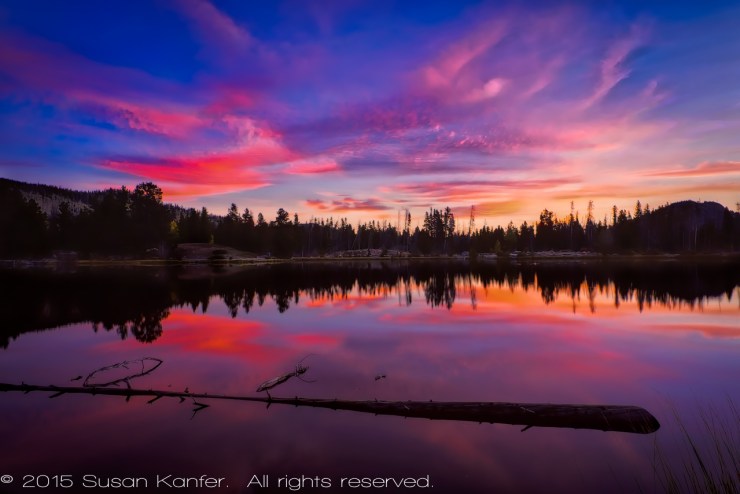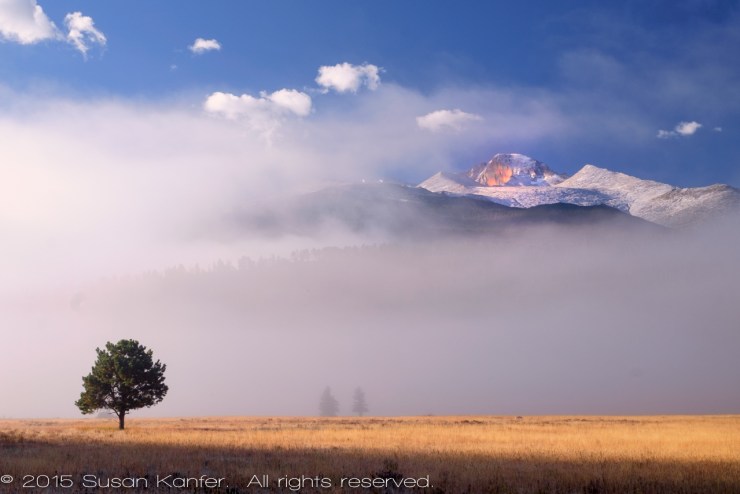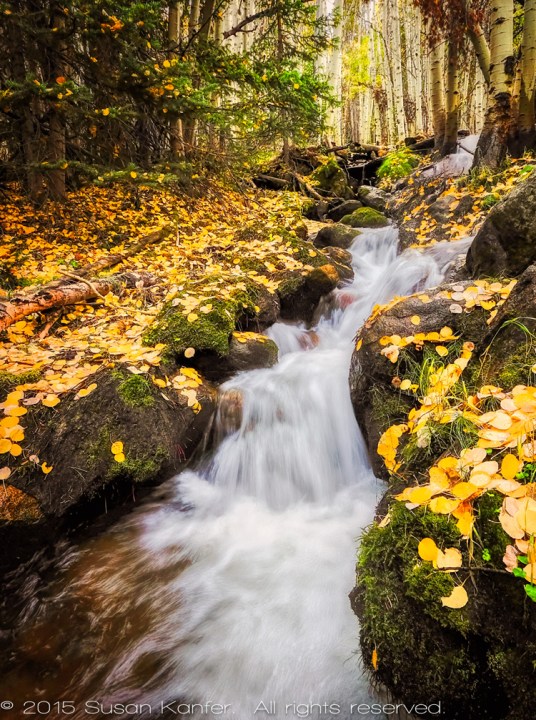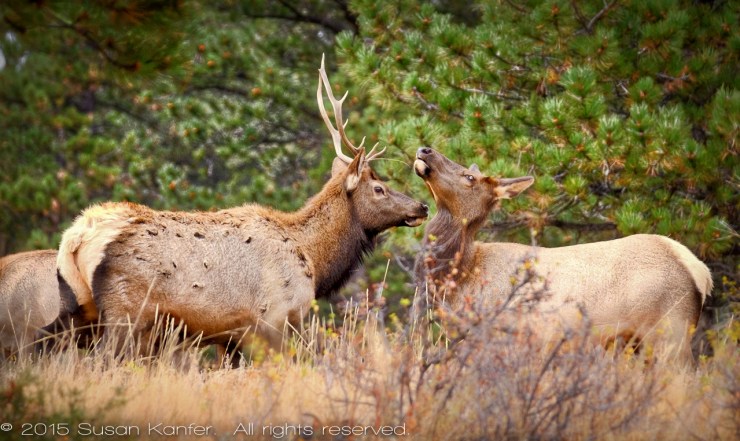Rocky Mountain National Park in the fall is a nature photographer’s dream come true: tall, rugged mountains, landscapes saturated with the colors of changing leaves, and wildlife so close at times you barely need a telephoto lens.
Timing is everything
I last visited the park the first week of October. Colors were still bold across the mountainsides, although they probably had peaked a week or two before, depending on the location. The days were warm, the mornings and evenings cool to cold. The air definitely felt like the seasons were in transition. Longs Peak, the focal point of the park at over 14,000 feet, was dusted with snow.

Consider starting your morning at Sprague Lake, ideal for sunrise shots. Arrive at least 30 minutes before sunrise, as it is a short walk from the parking lot to the lake. Don’t forget a flashlight or headlamp. I recommend checking out the sun’s location before you arrive so you know where to stand to see the sunrise. I use The Photographer’s Ephemeris. Once you take your initial sunrise shot, walk around the lake. There are beautiful reflections to photograph. The path, nearly a mile around, is flat and easy to walk. During one of my visits, I photographed a man fishing, with the mountains golden in the rays of the rising sun reflected in the water. It is my bestselling image from the park.
Return to a location
Plan to visit Sprague Lake more than once. There is a chance you will be fogged out some mornings. Clouds constantly change from day to day. If you are lucky you may have frost on the grasses at the side of the lake, backlit by the rising sun.

Some days the morning fog stuck around for a while. We drove the park roads looking for locations to set up our tripods and waited for the right moment as the mist lifted and the mountains and trees emerged.
Fall colors peak differently every year. Consult with the park rangers, to learn where colors are at their best and ask locals and other tourists places they recommend. Or, just drive around the park, finding those special spots with brightly colored leaves that you want to photograph. If there is any wind, a fast shutter speed is necessary, unless you want to capture the movement of leaves in a blur. Consider different types of light as you search for locations to photograph — side lighting and backlighting as well as direct. Fallen leaves are excellent subjects for macro shots.
Boulder Brook
Late afternoon is perfect for an uphill walk to Boulder Brook. As the altitude is a bit high at the brook, at over 9,000 feet, I suggest hiking in after you are acclimated to higher elevations. I also recommend hiking boots, as the path can be slippery, with obstructions from branches and rocks. The brook is magical in autumn, cascading downhill and surrounded by a blanket of yellow leaves fallen from nearby trees. Consider wide-angle and telephoto shots. Walk around and downstream, checking out several perspectives.

Boulder Brook is a good place to practice photographing waterfalls at different shutter speeds. The slower your camera’s shutter speed, the softer the water. To get the effect you are visualizing in your mind’s eye, use a neutral density filter to slow your shutter speed if you are unable to slow the shutter enough without the filter.
Mating season
The late afternoons and early evenings can be amazing in the fall, so pace yourself and don’t get too tired early on. The reason is that it is mating season for the elk. Bull elks with their harems move through the woods and the meadows. We watched and listened for hours.
The sexual intrigue is mesmerizing, as the younger males flirt with females, attempting to lure them away from the bulls. The bulls, in turn, fight for dominance. A highlight of the evening is when a bull holds up its head with magnificent antlers in the air and bugles, a sound that carries through the meadows with such force it brings goose bumps to the back of your neck.

Rocky Mountain National Park added information
Rocky Mountain National Park is a few hours outside of Denver, next to Estes Park on the east side and Grand Lake on the west, so very accessible. I suggest spending at least an overnight in Denver before driving to the park, if you are flying in from lower altitudes, to give your body time to adjust. Make sure you drink lots of water, as you will dehydrate more quickly at higher altitudes. Talk to your doctor before you leave, if you have any respiratory or heart issues. Take altitude sickness very seriously and seek medical attention if necessary.
The Park provides online information to help you plan your visit. Also stop at a Visitor Center, in the park, to get up-to-date information. Consider driving the Trail Ridge Road, at times exceeding 12,000 feet in elevation it provides great viewpoints for shooting grand mountain vistas and wildlife. If you prefer joining a photography tour, Gordon and Cathy Illg offer a 5-day tour in September. They are skilled photographers and instructors, are great to travel with, and know where to go.
No matter what your photographic interests are, Rocky Mountain National Park has wide appeal. It is a picture-perfect destination for an extended stay or a weekend escape.
Tell your story with the second annual Visual Storytelling Conference!
Experience four days of interactive, online training sessions featuring a range of educational content with experienced photographers and content creators. This free event kicks off with a series of technical boot camps to build essential skills, followed by live, online sessions on photography, video, business and social media. Join live from March 10-13, 2022!
